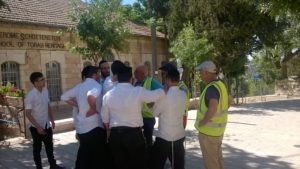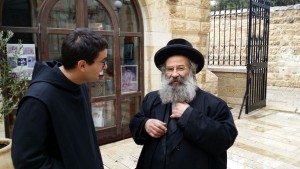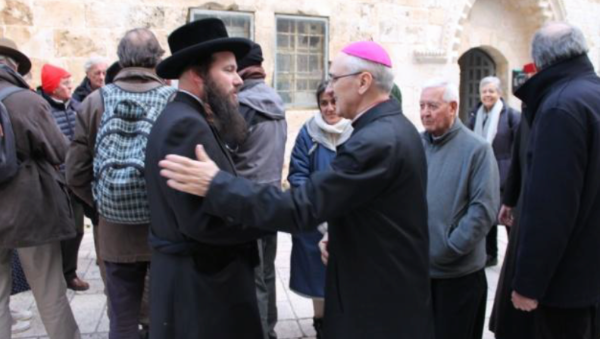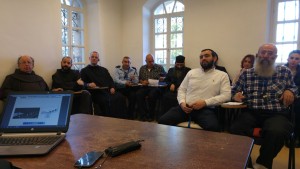Building Interreligious Respect in the Holy Land
Just outside Jerusalem's Old City walls, Mount Zion houses King David's Tomb / the Room of the Last Supper / Nabi Daud – one building sacred to Jews, Christians and Muslims.
Mount Zion is a microcosm of Jerusalem – sacred, complex and multicultural. Alongside the shared Holy Site on Mount Zion there are cemeteries as well as religious and educational institutions.
For hundreds of years tenants from different religious traditions have lived on Mount Zion – often in conflict with one another.
Mount Zion is a place of exceptional opportunity for inter-faith interaction as opposed to interreligious violence.
Our project, Window on Mount Zion decreases interreligious tensions by creating more opportunities for dialogue and interaction on issues of common concern. It celebrates diverse religious experiences and offers a constructive interreligious model for Jerusalem as a whole.
Search for Common Ground (SFCG) and the Jerusalem Intercultural Center (JICC) partnered to create a "Window on Mount Zion".
It combines three elements:
- gathering conflicting parties to act on common concerns
- working with volunteers to create a welcoming space for all
- increasing interreligious understanding with workshops/site visits for police and youth
Success Stories
Groundbreaking Tenants' Meetings on Mount Zion
In order to decrease tensions on Mount Zion, SFCG facilitated tenants' meetings attended by religious leaders and other residents on the mount. Gathering the resident institutions of Mount Zion together at regular tenants' meetings to discuss common concerns and joint action is quite revolutionary. Never before in its millennial history has this happened. Distrust and tensions have always triumphed.
Throughout the early months of the project we built enough trust so that the third tenants’ meeting allowed for an extraordinary discussion on a common vision for Mt Zion. Additionally, the tenants sent a joint letter listing safety and security hazards on the mount to the administrative authorities and received an immediate response. This is the power of cooperative action.
Calming Presence of Volunteers
On March 24, 2016 at a pre-Easter Catholic service at the Room of the Last Supper, we expected tensions as the Jewish festival of Purim fell on the same day. 17 volunteers were prepared by the police and, in distinctive jackets, advised pilgrims and visitors, while serving as additional monitoring eyes.
After the service, the commander of the Mt Zion police station said:
“Last year we had more police presence, more violence and more Jews demonstrating against the Christians. This year it was calmer and there were fewer police officers.(…) The volunteers (…) greatly helped the police with explanations to tourists and in creating a calming atmosphere. The interns speak different languages – French, English – and this is also a great help (…)"
A recent article in Haaretz about the Greek Orthodox Pentecost Prayer in the Room of the Last Supper on June 20, 2016 states:
"Police acknowledged that the volunteers, who tried to engage the protestors in discussion and explain the commotion to foreigners, played a crucial role in maintaining the relative calm" – Haaretz, June 21, 2016
Joint Denunciation by Mt. Zion Residents on the Defacing of Christian Sit es
es
On January 17, 2016 the walls of the Dormition Abbey and the Greek Orthodox and Armenian Cemeteries were defaced with abusive and threatening graffiti. For the first time in the history of Mt Zion, the residents published a joint communique in Hebrew and English vehemently condemning the actions. Two meetings between Haredi (Jewish ultra-orthodox) and Catholic religious leaders took place to build relationships as a direct consequence of this communique.


